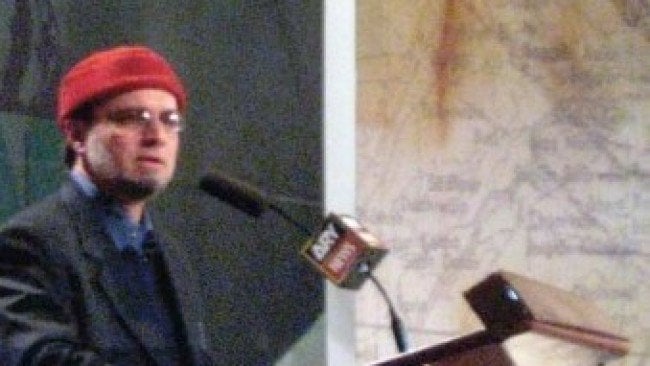
It is a few days after the Mumbai attacks in November 2008 and the Indians have been baying for Pakistan’s blood.
Zaid Hamid: For a long time from the ‘Brass Tacks’ platform, we have been raising the issue of Indian Christians and their treatment, the abuse of Sikhs, the Dalit and Shudr — the untouchables — against whom the Hindu-Zionists have been running an intensive campaign…From within India, we get messages through email and SMSes about the mood there. (cut to anchor looking on blankly)
ZH: So today we give the breaking news that the Christians, Dalit and Shudr — who are working in the Indian establishment, military establishment and police services intelligence — the people who were involved, the boy whose picture is being shown over and over again…
Anchor: If we could ask our producer to display that picture…
ZH: If you notice that he is wearing a yellow band on his hand…
Anchor: That orange band…
ZH: This orange band, this saffron band is the special mark of BJP terrorists. The boy’s name is Amar Singh, and he is a Sikh. The boy who was killed with him, his name is Heeralal. They are both RAW agents, and we got this news from within the Indian intelligence setup …
Anchor: He was arrested and Heeralal was killed… (ZH saying something in the background)
ZH: His face was mutilated…
Anchor: And Zaid sahab, this picture that we are looking at of a boy wearing an orange band, carrying bags and perhaps a gun. He is Sikh?
ZH: If you analyse it, even his face isn’t Pakistani, no Pakistani Muslim looks like this …
Anchor: It is an Indian face and we understand the difference.
Zaid Hamid goes on to give further evidence of his breaking news, based on the alleged bottles of alcohol found in the backpacks of the Mumbai terrorists and the lack of fear on the man’s face. But that man was irrefutably proved to be Ajmal Kasab. It was the Pakistani media that tracked Kasab down to Faridkot village in Punjab: Amar Singh was in fact a Pakistani.
Hamid responds smoothly to being spectacularly wrong more than a year later, in an exclusive interview to The Express Tribune, shrugging it off as being misinformed. His method is certainly effective: rapid-fire delivery studded with statistics, anecdotal evidence of Hindu-Zionist-American conspiracies to destabilise Pakistan and references from Muslim history — all delivered with sincere conviction. It partially explains his popularity.
His once highly rated show ‘Brass Tacks’ may have ended its run, but he is still out there with his own websites, a Facebook page and DVDs that are pirated in Rainbow Centre and widely distributed across the country. His speaking engagements in colleges and universities across Pakistan may be suspended due to ‘security reasons’, but hate mail is sent in droves to his most outspoken critics by his fans. He proudly says his Facebook page has more than 54,000 fans, more than Imran Khan but less than Pervez Musharraf. The truth is, while the Tehreek-e-Insaf Facebook page has a mere 11,000 fans, even unofficial pages for Imran Khan outstrip Hamid’s.
In a sense, he is the Pakistan version of Harun Yahya, the Turkish creationist and one-man marketing machine. Like Yahya, Hamid has his share of enemies and legal troubles; like Yahya, the sources of his funding and backing are rumoured to have an agenda; like Yahya, he often romanticises the past in the face of a changed contemporary context.
That is where the similarities end, however. Where Harun Yahya is on a crusade against Darwinism and evolutionary biology, pitting religion against science, Zaid Hamid’s vision is a martial, conquering, unified Pakistan.
The only trouble is, he is proving to be more polemical than unifying.
...
Just past Captain Amar Shaheed chowk — one of Rawalpindi’s busiest roundabouts — is the office of Syed Zaid Zaman Hamid. To the left of the chowk is Chaklala Garrison which houses more three star generals per square mile than any other place in Pakistan other than the GHQ. Eight terrorist attacks have taken place near here since 2004, not including an assassination attempt on General Pervez Musharraf on the bridge leading to the chowk. Opposite the rented office is a colony for army personnel where his father, a retired colonel, lives. Here, geography is as ideological as it is personal. It’s an appropriate location for a man with a rather martial outlook.
His staff officer or khadim, as he calls himself, explains the route to the office in detail — including a boutique as a landmark where, he says, “You can pick up some nice suits if you have the time.” In person, it’s easy to forgive his patronising tone. I also had to deftly dodge pre-screening questions about my opinion on Hamid and my views on Aman ki Asha.
He’s young with a straggly beard and a clean English accent. He tells me he’s had every kind of job imaginable: as a cabin crew member on Emirates airlines, selling biryani and socks on the streets and at a Malaysian McDonald’s. His last job, howev- er, was as a kafeel, arranging finances and food rations for the widows and orphans of dead mujahideen. He says Zaid Hamid’s reputation as a mujahid, experience on the field in Afghanistan, spirituality and his exposition on economic terrorism drew him to work at ‘Brass Tacks’.
He is solicitous, chatting easily over cool glasses of Rooh Afza before I get to meet the man himself, kind of like the second-rate opening band before the concert draw comes on stage. “You’ll be surprised that in person he is cool, calm, soft-spoken and informal,” he tells me.
In that, he is right. Zaid Hamid’s public persona could easily be described, as author Muhammad Hanif wrote, “a cross between an effeminate Che Guevara and Hafiz Saeed on acid.” But one-onone, he is charming, articulate and soft-spoken.
Born in 1964 to immigrant parents, Hamid is the second of four siblings. Slight, fair and green-eyed, he coyly says he gets his “Kashmiri complexion” and his special interest in the affairs of the disputed state from his mother — who is of Kashmiri origin. His Bihari father fought in the Sialkot sector during the 1965 and 1971 wars, and Hamid’s childhood was spent as an army brat bouncing from posting to posting.
“I come from a family of armed officers — both on my mother’s and father’s sides,” he explains, “My mother herself is quite martial, I must say, because she was part of the national guards, the women’s guards and she was an instructor in civil defence for the women of that time also.”
No surprises then that Hamid tried out for the army when he was 18, but was unable to pass because of his weak eyesight. “I was equally adamanat,” he says, “I would do my engineering at my own expense and then join the army.”
At the NED University in Karachi where he studied computer systems engineering, he became a member of the Islami Jamiat Taleba, “more because of the idealistic notion of an Islamic state, without too much thought into their parent organisation — the Jamaat-e-Islami — and what they believed in.” He says he was also close to the Imamia Student’s Organisation, even though it was Shia, because of “the concept of revolution and standing up to the Americans.”
Ironically, it was the Americans with whom he would be indirectly allied. For, instead of a soldier in the Pakistan Army, Zaid Hamid became a soldier of Islam.
“I must say, I have very brave parents,” he remembers, “It was a difficult decision for them. I was the first-born son and I was also their star child, brilliant and sharp.” His mother was easy to convince — “I never stopped your father when he went for jihad” — but his father wanted him to complete his studies.
If the Afghan jihad — funded and supported by the CIA and the ISI to fight the infidel communists — is pivotal in Pakistan’s history, it is also the case in Hamid’s biography.
Between the mid-eighties to early nineties, that is during the jihad proper and after Afghanistan descended into civil war, Hamid easily slipped across the border to Afghanistan as if they were weekend sojourns to Murree. He hobnobbed with mujahideen from around the world, seduced by the romantic ideal of “delivering a Muslim land from a foreign occupation force,” and got involved in producing propaganda material including a documentary called Qasasul Jihad.
...
At the office of Zaid Hamid’s thinktank Brass Tacks — after which his television programme was named — the Hollywood movie 300 is playing as I am led into the sitting room. It is quickly changed to a news channel as Hamid shows me framed photos he says he has taken of his days in Afghanistan. There is one of him – barely recognisable with his turban and black hair — sitting with a group of armed fellow mujahideen inside a tent. Others are generic shots of fighters against the stark khaki mountains of Afghanistan under an azure sky. Many are of Northern Alliance leader Ahmed Shah Masood, with whom Hamid says he developed a close association.
“Do you see who’s with Masood there,” he points out eagerly. “That’s MM Alam.” Retired Air Commodore MM Alam was awarded a sitara-e-jurrat or medal of courage for his actions during the 1965 war between India and Pakistan. It has been said his role in the Afghan jihad transformed the hero of the 1965 war into an ascetic, so it is ironic that Lahore’s fine dining and highend shopping takes place on a road that has been named after him. Such are the contradictions of Pakistan.
Last year, Qatari channel Al-Jazeera and Gallup Pakistan published a joint survey on the state of the Pakistani nation. Respondents were asked whether the Pakistani Taliban, India or the US were the greatest threat to the country. Fifty-nine per cent said it was the US, 18 per cent believed it was India and 11 per cent thought it was the Taliban.
In a country in the grip of chronic political instability, economic fragility and the constant, pernicious threat of terrorism, insecurity has become the glue that binds the public mood. There are no easy answers as to why Pakistan has reached this point. And in the blank spaces, dark theories about an American-Hindu-Zionist conspiracy to undermine Pakistan have festered. They grow in the petri-dishes of cyber-activists and the right-wing media.
Zaid Hamid thrives in this viral soup. His series on economic terrorism, for example, explains that Zionists control the financial system in order to undermine Muslim societies. His bromides on economic theory and foreign policy are culled from left-wing, anti-globalisation and anti-imperialist intellectuals like Noam Chomsky. Clothed in nationalism, accessorised with Islamic terms like Medina-e-Sani or the second Medina and emblazoned with the evil triumvirate of RAW-Mossad-CIA, Hamid’s ideology is all dressed up without a clear orientation.
It was the series on economic terrorism that attracted rock star Ali Azmat to the ideologue. “People are already depressed with what’s happening in the country, we are trying to uplift them,” he says. Hamid and Azmat have featured in a TV series on Allama Iqbal and he has been supporting the ideologue in a movement dubbed Takmeel-e-Pakistan (TP) which calls for a fresh commitment to recreate Pakistan.
In times of insecurity, people cling to patriotism and nationalism like vines to an oak tree. In this regard, there is no denying that Hamid offers hope and clarity. But Amir Rana — director of the think tank, Pak Institute for Peace Studies (PIPS), and author of Jihad and Jihadists — sees a red flag. Rana says that Hamid’s hypernationalism (often associated with Nazi-style nationalism that gained pre-eminence over the insecurity following Germany’s defeat in the first world war) leads to a radicalisation of society “because you cannot detach this movement from the violence espoused by jihadi outfits.”
Zaid Hamid himself endorses Kashmiri jihadi groups like Lashkar- e-Tayyaba or Jamaatud Dawa and Jaish-e-Mohammad, who like him use the controversial hadith on Ghazva-e-Hind to recruit as well as justify their actions against India. “They are the good Taliban,” he says. For him, the Tehreek-e-Taliban Pakistan are the bad Taliban, funded and armed by foreign militants and powers such as India’s intelligence agency RAW.
Such sentiments reflect the thinking within Pakistan’s military- intelligence establishment which nurtured jihadi outfits as a tool of foreign policy. It is what Rana calls a “hyperised version of the state narrative.”
Indeed, so closely does he hew to this narrative as well as his role in and views on Afghanistan that he is often accused of being bolstered by the ISI. Hamid laughs it off: “Would I live in a rented flat with no security if the ISI funded me?”
Certainly an old acquaintance from the jihad days, former ISI chief General Hamid Gul neither affirms nor confirms this rumour. Gul also quickly dissociates himself from the Zaid Hamid marketing machine, even though a video testimonial of his can be found on the TP website. “I just went once, because I don’t have a platform of my own so I use every platform I can find.”
Gul, however, admires Hamid for his communication skills, which have been able to inspire “the youth of Pakistan.” He cites a convention of Hamid’s where male and female, jeans-clad students and bearded types from Lashkar-e-Tayyaba rubbed elbows. “The common thing was Islam…because it is the scarlet thread that runs through society. If we are able to articulate this, then we can bridge the divisions.”
But that has not happened. Gul admits that while Hamid has been able to rope in the middle-class youth, he hasn’t quite won over the orthodox class. Indeed, the red-hatted one is dismissive of sectarian outfits and Deobandis who, he says, dance to the tune of anti-Partition Indian Deobands that were against the creation of Pakistan. One campaign against Zaid Hamid claims he was a disciple of Yusuf Ali aka Yusuf Kazzab.
Kazzab allegedly claimed prophethood and was awarded the death penalty under the Blasphemy law in 2000. He was shot before he could be hanged. Then with a security firm, Hamid condemned the conviction in a letter to the editor titled ‘Murder of Justice’. That and a dubious audio tape circulating in cyberspace, as well as references in various Urdu newspapers of the time, are cited as evidence of Hamid’s deviance. In fact, so sure are activists of the Aalmi Majlis Tahaffuz Khatam-e-Nabuwwat (AMTKN) that Hamid is guilty, they named him in an FIR in the murder of their leader Mufti Saeed Jalalpuri after a press conference in Karachi. The mufti had published a booklet accusing the defence analyst of being Kazzab’s disciple.
“Bloody lies,” spits Hamid. He says his link to Kazzab was manufactured by the influential owner of an Urdu rag as a personal vendetta, while the AMTKN are a splinter group of the sectarian outfit Sipah-e-Shahaba. Recently his Facebook page described a particularly sticky sectarian online critic as an Indian agent who desires the break up of Pakistan.
Indeed, all critics of his are branded atheist, anti-Pakistan or attacked personally. Like General Pervez Musharraf, Hamid equates criticism of him to treason.
Like Rana, whose think tank PIPS is currently conducting a content analysis of Zaid Hamid’s speeches, political commentators Fasi Zaka and Nadeem Farooq Paracha think there are contradictions in Hamid’s message. But unlike Rana, the two columnists have taken their beef to the public.
Zaka, who was the first to launch the reasoned anti-Zaid Hamid critique two years ago, explains Azmat’s attraction to Hamid as an accident. “He was quoted in a magazine doubting that E=MC squared, because it is a Jewish conspiracy in science to mislead Muslims. Ali became convinced he was an intellectual after watching two YouTube documentaries, the same ones that Zaid has appropriated for his shallow ideas on imperialism, economics and society.”
Paracha, meanwhile, says that a certain section of the media took him on because as a great orator and speaker the minority that bought his rhetoric are those “who would go on to join the bureaucracy, multinationals and even politics. Up until then, nobody was asking questions.”
In fact, Zaka and Paracha challenged the ideologue to a televised debate on a popular channel. The gauntlet fell unheeded. “The channels that promoted him did not allow a counter-narrative, his is a monologue rather than a dialogue,” explains Paracha.
The debate here is not between ideologue and intellectual, left and right, Zionist and Muslim, it is a debate on what it means to be Pakistani. The story of Zaid Hamid’s rise to fame carries in it the conflict over Pakistan’s identity.
“I was never the kind of person who would look for glamour or glory or celebrity status,” he says.” It’s come at a stage in life when maturity has set in so we have taken it in our stride instead of being carried away with it.”
His frequent use of the royal pronoun ‘we’ reflects his desire to be an agent of history: his great belief in the country’s historic destiny and his place in it. He admits to being influenced by Allama Iqbal and twentieth-century novelist Naseem Hijazi, taking a burnished, romantised view of Muslim history.
But it is his vanity and hubris, more than his jumbled ideology, that may prove to be his undoing. I asked him why he wears a red hat, when it’s a mark of the ANP, who he calls “idiots”.
“To keep my head warm,” he smiles enigmatically.
But it’s hot outside, I say.
“Then it’s to keep me hot-headed.”
2. The adoption of the gold standard was a Zionist plot
3. Suicide bombers in Pakistan are actually Hindus because they are uncircumcised.
4. The flag of Pakistan will fly atop Delhi Fort very soon
5. The nuclear weapons of non-Muslim countries will either become unusable or explode on their own territories
6. The 2008 Mumbai attacks were hatched by “Hindu Zionists” just as the 9/11 attacks were planned by “Western Zionists”
7. The dead bodies of Pakistan’s elected leaders will hang on poles in Islamabad, like what was done with Dr Najibullah in Afghanistan
COMMENTS (94)
Comments are moderated and generally will be posted if they are on-topic and not abusive.
For more information, please see our Comments FAQ











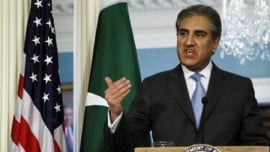
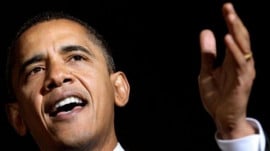
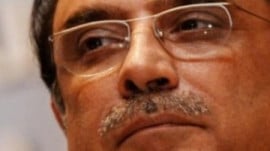
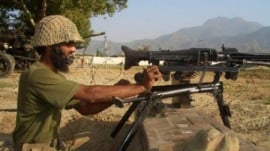















1714129906-0/Clint-Eastwood-(1)1714129906-0-270x192.webp)

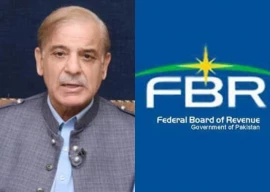








* Has a grandiose sense of self-importance (e.g., exaggerates achievements and talents, expects to be recognized as superior without commensurate achievements) * Is preoccupied with fantasies of unlimited success, power, brilliance, beauty, or ideal love * Believes that he or she is "special" and unique and can only be understood by, or should associate with, other special or high-status people (or institutions) * Requires excessive admiration * Has a sense of entitlement, i.e., unreasonable expectations of especially favorable treatment or automatic compliance with his or her expectations * Is interpersonally exploitative, i.e., takes advantage of others to achieve his or her own ends * Lacks empathy: is unwilling to recognize or identify with the feelings and needs of others * Is often envious of others or believes that others are envious of him or her * Shows arrogant, haughty behaviors or attitudes. (source Wikipedia).